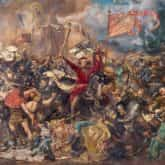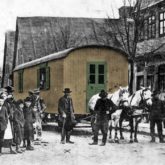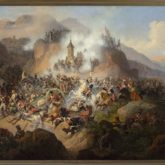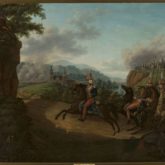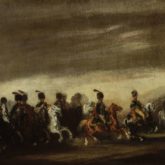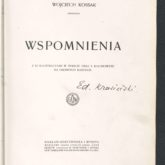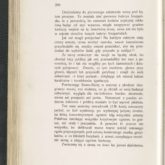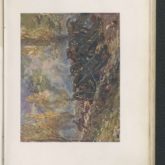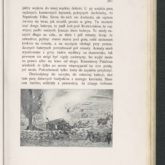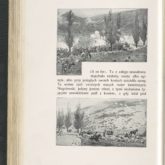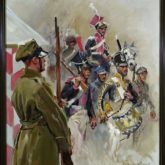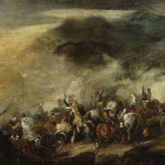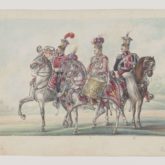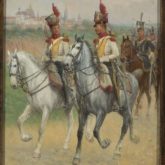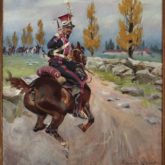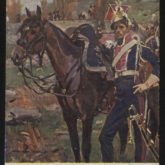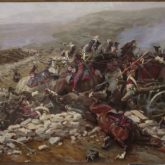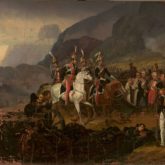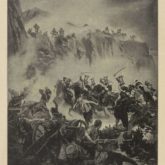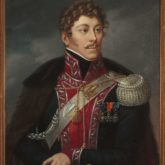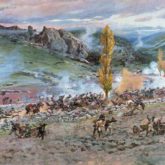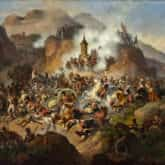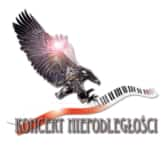“Wąwóz Somosierry” (Somosierra Gorge) – a Polish military song from 1905 to music by an unknown author with words by the Polish poet Maria Konopnicka. The author lived in a part of Poland occupied by the Russian Empire, so she had to publish this poem under the pseudonym „Jan Sawa”. „Wąwóz Somosierry” is a poetic description of the famous charge of the Polish Light Cavalry (Chevau-Légers) serving in the Imperial Guard of Napoleon I. It took place on 30 November 1808 in the Somosierra Gorge. In Europe, this charge was considered one of the most brilliant feats in cavalry history. In Poland, which was divided and occupied by Russia, Germany and Austria until 1918, the memory of this battle was repeatedly referred to by painters, poets and historians.
Somosierra Gorge
Music: author unknown
Lyrics: Maria Konopnicka (published under the pseudonym Jan Sawa)
Song description
Title: Somosierra Gorge
Music: author unknown
Lyrics: Maria Konopnicka (published under the pseudonym Jan Sawa)
Historical note
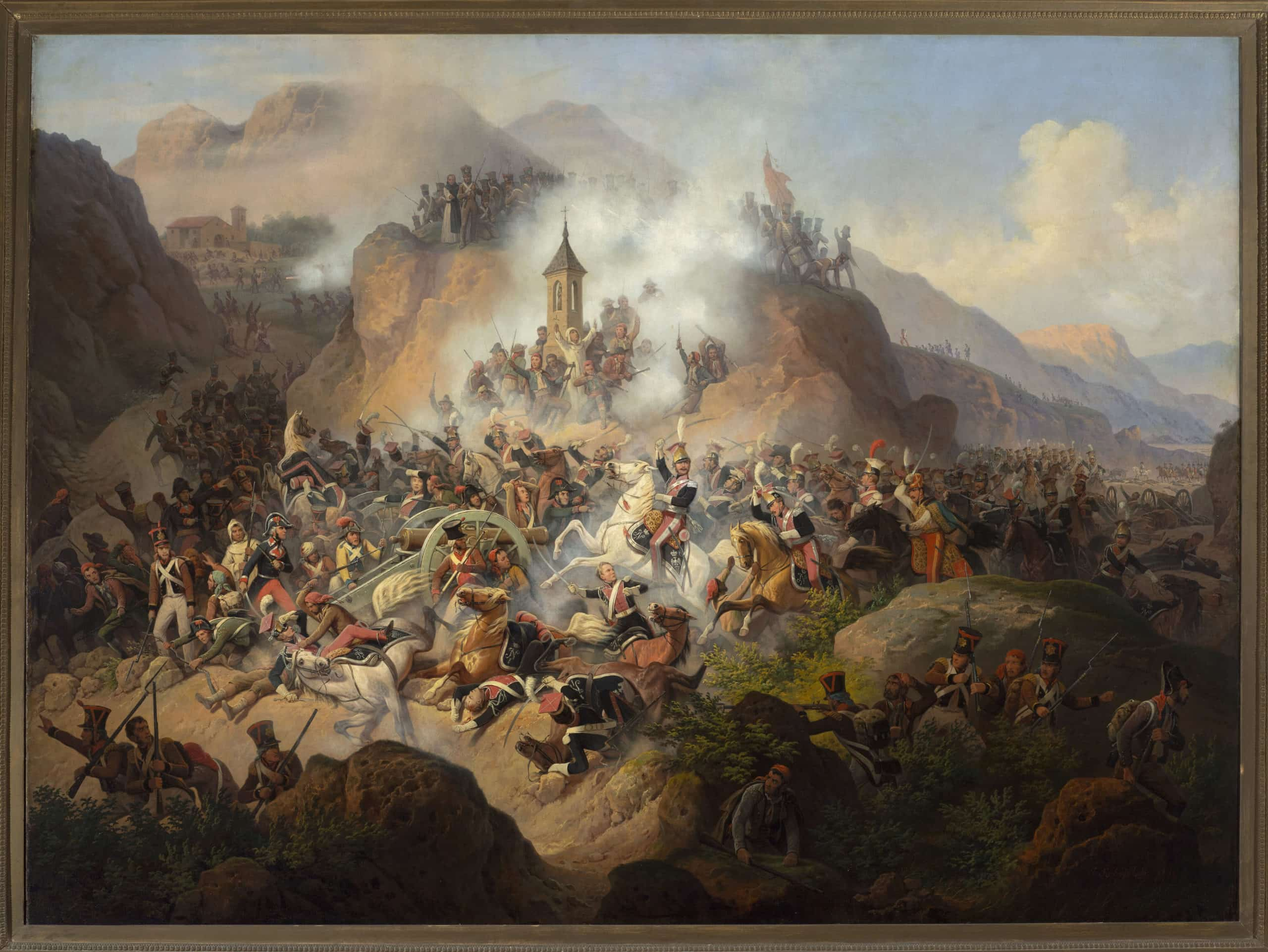
The text of the song refers to the famous charge by a squadron of the Polish Light Horse Regiment of the Imperial Guard [1] on the Somosierra Pass in Spain (November 30th 1808 [2]). It was an episode of the French intervention aimed at restoring Napoleon’s control over revolted country. The charge settled the battle’s score, where the French troops fought for opening of the road leading to Madrid. The centre of Spanish defence consisted of four quadruple-gun batteries, deployed on a narrow road sheltered by low walls. After the attack of a French infantry got repelled, Napoleon threw an escort squadron of Polish cavalrymen (Chevau-Légers) into the battle. On this particular day, it was the 3rd squadron commanded by Jan Leon Kozietulski [3]. General Montbrun who led the advance guard, stated that such an attack was impossible, which was additionally confirmed by Marshal Berthier. Napoleon just replied „Leave it to the Poles”, and repeated the order. Chevau-Légers moved to the battle in a formation of 125 men. Within eight minutes, they had captured all four quadruple-gun batteries, thus making opening of the road to Madrid possible. The officers mentioned in the text have commanded over the consecutive stages of the charge. Jan Kozietulski got wounded fighting against the first battery. Captain Jan Dziewanowski [4], commanding the 3rd Company (Squadron consisted of Companies 3. and 7.) was heavily wounded during an attack on the third battery, and died several days after the battle. Lieutenant Stefan Krzyżanowski was also killed in the same place, on the third battery. Returning from reconnaissance, Lieutenant Andrzej Niegolewski’s [5]platoon overtook the remnants of the previous assault unit, and attacked, capturing the battery despite heavy losses. Niegolewski himself was severely wounded but managed to survive.
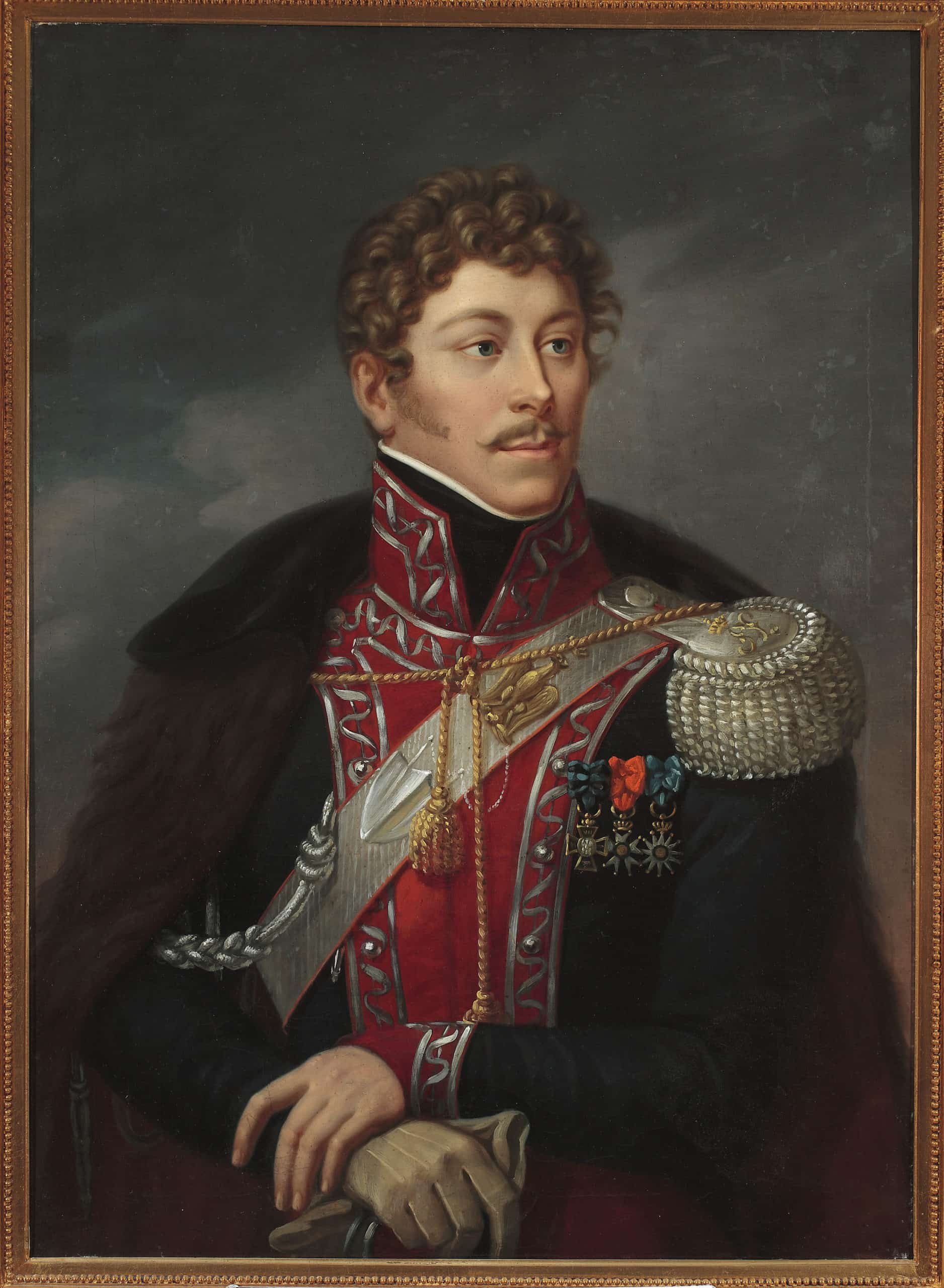
Polish losses in killed and wounded amounted to 57 men (including 22 killed and dead from wounds after the battle). Several dozen horses also fell in the course of the charge. Following officers were killed in the battle: Captain Dziewanowski (died several days later), Lieutenant Krzyżanowski, Second Lieutenants Rowicki and Rudowski; non-commissioned officers: Sergeant Major Sokołowski and Brigadier Mroczek; Chevau-Légers: Białkowski, Ciesielski, Drodziński, Drożdżewski, Jasiński, Kowalski, Rokuszewski, Rymdzyko, Strachowski, Sulczycki, Turczyński, Wasilewski, Żabałowicz, Żurawski, Żylicz and Nieszworowicz (missing in action). For such a relatively small price, Napoleon achieved breakthrough in the campaign, while Polish light cavalry gained an immortal fame.
The Somosierra Charge gained an enormous popularity in the partition period as one of the finest points of the Polish history of the Napoleonic era. It also repeatedly became a theme for Polish painters of the 19th century – e.g. January Suchodolski or Juliusz and Wojciech Kossak. In modern times, the charge was depicted in Andrzej Wajda’s film Popioły (1965), in which Somosierra replaced the famous charge of the Vistulan Lancers (Uhlans) in the Battle of Albuera. Konopnicka’s poem was published several times in various collections, but due to the realities of the Russian partition, the author hid behind pseudonyms (e.g. Jan Sawa, Lwów 1905).
Text analysis
The text of the song is a simple narrative of the observer, witness of the charge. In a first stanza, a „strategic theatre of operations” (French intervention in Spain) is presented to us, along with the tales of the heroes of the story, Polish Chevau-Légers. The last sentence mentioning the „miraculous capture” of the Somosierra Gorge refers to the extreme difficulty of the task set for the Chevau-Légers. Within eight minutes, a handful of Polish cavalrymen managed what several thousand French infantry with artillery support were not able to cope with. The Chevau-Légers, due to the terrain difficulties, had to attack each battery straight on, in a murderous cannon and musket fire. This is why this charge was considered almost a miracle, and certainly one of the most brilliant cavalry feats in history. The second stanza describes the first stage of the battle – the bloody defeat of the French attack. The „French cavalry” mentioned here is most likely a reminder of the French mounted riflemen of the Imperial Guard who tried unsuccessfully to attack the first battery. „Kozietulski” which is mentioned here is obviously the Squadron leader Jan Kozietulski, who commanded the unit in the absence of Ignacy Stokowski. While charging the first battery, Kozietulski fell off his horse and, injured, returned to the rear – thus, „did not return” contained in the stanza is historically incorrect. The next stanza mentions the commander of the 3rd Company Captain Dominik Dziewanowski. After Kozietulski’s fall, he led the Chevau-Légers’ assault on the second battery. He was mortally wounded when cannonball severed his leg off right in front of the third battery. It is another historical mistake appearing in Konopnicka’s text which suggests that Dziewanowski’s injury took place at the second battery. It is connected to another error in the third stanza according to which it was Lieutenant Krzyżanowski who led the further attack and was killed in the battle for the third battery. In fact, he charged together with Dziewanowski. The Captain was mortally wounded and the Lieutenant was killed. Now we come to the fifth stanza describing the charge’s final moments. Lieutenant Niegolewski’s platoon returns from reconnaissance mission, and joins in the attack on the last battery. It captures it in the sixth stanza. The wounded Lieutenant is decorated with an „eagle” by Napoleon himself. In reality, Niegolewski fell on the battery, crushed by a killed horse. He got punctured by bayonets and got shot at by the Spanish infantrymen. Severely wounded Lieutenant was awarded the Legion of Honour by the Emperor while still on the battlefield. In a text, Napoleon tells Niegolewski that „nothing is impossible for a Pole”. It is hard to estimate whether there in any historical truth in it. However, it is a fact that during the regimental revue on December 1st, the Emperor saluted the Chevau-Légers as “the bravest of the brave”.
Compiled by Piotr Pacak
Endnotes
[1] The 1st Chevau-Légers – Lancers Regiment of the Imperial Guard, actually the 1st Light Cavalry Regiment (Polish) of the Imperial Guard (French: 1er régiment de chevau-légers lanciers polonais de la Garde impériale), a unit of Polish Chevau-Légers of the Napoleonic era under the command of Wincenty Krasiński, existing in 1807-1815. It formed part of the Imperial Guard of the First French Empire. Among its other combat feats, it took part in the charge on the Somosierra Pass, in the battles of Wagram, on the Berezina and at Hanau. Wikipedia entry. Article on napoleon.org.co.uk.
[2] Battle of Somosierra: Wikipedia entry, Webpage on napoleon.org.pl. It was at Somosierra, A Historical Tale by Wacław Gąsiorowski.
[3] Jan Leon Hipolit Kozietulski, coat-of-arms Abdank (born 4 July 1778 or 1781 in Skierniewice, died 3 February 1821 in Warsaw) – Colonel of the Polish Army, commander of the 3rd Squadron of the 1. Polish Light Cavalry Regiment of the Imperial Guard (1er Régiment de Chevau-Légers Polonais de la Garde Impériale), commander of the 3rd Regiment of Eclaireurs of the Imperial Guard (3e régiment des éclaireurs de la Garde impériale), commander of the 4th Cavalry Regiment of the Congress Kingdom. Baron of the French Empire. He is buried in the vaults of the Holy Trinity Church in Belsk Duży. Wikipedia entry.
[4] Jan Nepomucen Dziewanowski (born 1782 in Płonne, died 5 December 1808 in Madrid) – Polish military officer, Rittmeister of the Polish Chevau-Légers of the Imperial Guard. Wikipedia entry.
[5] Andrzej Marcin Niegolewski, coat-of-arms Grzymała (born 12 November 1787 in Bytyń near Szamotuły, died 18 February 1857 in Poznań), colonel in the Polish Army, participant of the Napoleonic campaigns, landowner, social activist. In the charge at Somosierra, he was one of the few to reach the fourth and final enemy battery at the very top of the pass, suffering nine wounds from bayonets and two from enemy bullets. For this feat, he was awarded the Legion of Honour, most probably by Napoleon himself. Wikipedia entry.
 Strona dostępna w języku polskim
Strona dostępna w języku polskim  Website disponível em português
Website disponível em português 